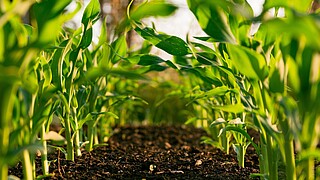When I first started working on the research project about finance and biodiversity, I was intrigued by the interconnection of these two topics.
It is becoming increasingly clear that we not only face a climate crisis, but also mass extinctions and alarming rates of species decline. Nonetheless, the loss of biodiversity is still undervalued by financial institutions. This motivated us to explore how financial institutions can go beyond simply minimising their negative impact on the environment, and instead positively contribute to the financing of biodiversity restoration and conservation.
To narrow the scope of the project, we focused on regenerative agriculture. This approach focuses on regenerating top soil, increasing biodiversity, improving the water cycle, enhancing ecosystem services, supporting biosequestration, increasing resilience to climate change, and strengthening the health and vitality of farm soil – and it’s one form of combining biodiversity restoration with a business model.
This is a particularly relevant focus for the Netherlands, which is one of the largest agricultural producers in the world with a long history of innovative farming practices. We interviewed members of the working group on biodiversity, which is part of the Dutch Sustainable Finance Platform, and used two case studies on nature-based farming solutions to distill a model that shows how biodiversity in general, and regenerative agriculture in particular, can more easily access mainstream finance.
The biodiversity financing gap
Even though the global spend on biodiversity conservation is an estimated $143 billion per year, by 2030 the world will need between $722 and $967 billion annually to conserve global biodiversity – so in the next seven or eight years there will be an annual biodiversity conservation financing gap of between $598–824 billion per year that needs to be closed.
Private sector financing is crucial for closing this gap, but the financial sector continues to approach biodiversity loss predominantly from a risk-reduction angle, aiming only to cause “less harm” to the environment. This will not be enough to address the rapid decline of biodiversity.
Instead, financial institutions must start allocating funds to initiatives which restore and conserve rather than deplete our ecosystems. One way to do this is by financing regenerative agriculture.
What is regenerative agriculture?
Farmland makes up about half of the Earth’s ice-free land and intensive agriculture representsa primary driver of biodiversity loss due to excessive greenhouse gas emissions, land expansion, and continuous intensification of agricultural production. In contrast, regenerative agriculture offers a way for food to be grown so that it returns and restores nutrients and life to the soil rather than depleting them, as conventional agricultural practices do. These principles can help transform farmlands into biodiversity-enhancing areas. But how can regenerative agriculture initiatives be financed?
To answer this question, we took a closer look at two cases: the land stewardship foundation StichtingGrondbeheer, and eco-farm Burgerboerderij De Patrijs. These cases revealed that there are two fundamental issues to overcome to realise the transition to nature-inclusive, regenerative agriculture: high prices for farmland and the lack of fair returns for farmers.
Making farmland more affordable
Stichting Grondbeheer is a non-profit foundation that makes agricultural land available for biodynamic farming.The Netherlands has the highest average price for farmland in the EU at €70,000 per hectare. This makes it difficult, if not impossible, for new farmers to start a farm, let alone buy or lease one and transition it to nature-inclusive farming. These high starting costs push farmers to intensify their operations to generate greater short-term revenues.
But intensified practices deplete the soil and decrease biodiversity, harming long-term agricultural returns. Grondbeheer shows how this issue can be overcome by raising funds to buy farmland through donations and low-interest perpetual bonds, then leasing it to farmers at a low price. Taking the profit motive out of the picture and ensuring that the land will not simply be resold to the highest bidder means that Grondbeheer enables farmers to cultivate the land in a sustainable way with a long-term perspective.
A true price for our food
Another issue is the absence of a true price for organic products and sustainable land management which makes it difficult or farmers to generate sufficient returns. A visit to the people behind Burgerboerderij De Patrijs gave us some insights into how farmers could generate fair returns.
De Patrijs is a farm-to-consumer initiative that delivers local, organic, healthy produce via a membership model. They are currently in the process of buying an established farm and making it nature-inclusive. By creating a direct link with customers who buy organic food that’s produced close to home, De Patrijs shows what food should actually cost and gives a glimpse of what a sustainable Dutch agri-food sector could look like in the future.
These cases show how the current societal system still favours intensive agriculture which is unsustainable in the long term. A complex systems problem such as biodiversity loss thus asks for a systems solution in which multiple stakeholders join forces.
To read more about the framework for financing regenerative agriculture, have a look at our research paper.

